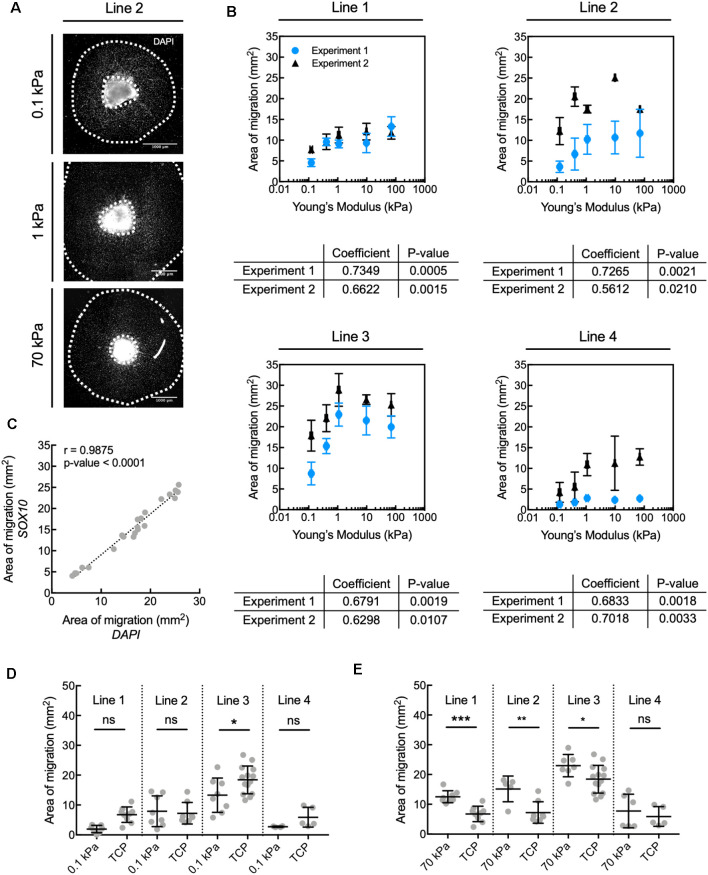Figure 2.
Human oligodendrocyte lineage cell migration is inhibited on compliant substrata, over the range of elastic moduli E = 0.1–70 kPa. (A) Representative images depicting spheroids (bright region in image center) and area of migration of DAPI-stained cells away from spheroids generated from donor cell line 2. Scale bars are 1 mm. (B) Propensity for migration of all nucleated DAPI-stained cells correlated positively with increasing stiffness of polyacrylamide hydrogel substrata, over the range of E = 0.1–70 kPa, for all donor cell lines. Values are mean ± standard deviation; n ≥ 2 spheroids per hydrogel substratum stiffness. (A,B) Migration from the spheroids was quantified as the total area enclosed by the outer perimeter of cells further away from the spheroid, and an inner perimeter demarcated by the edge of the spheroid. Spearman correlation coefficient was calculated across hydrogels. All coefficients were statistically significant, with p < 0.05. (C) The propensity for migration of oligodendrocyte lineage cells (SOX10+ cells) was comparable to that of the entire population (DAPI); r is the Pearson correlation coefficient; n = 22 spheres; pooled from two independent experiments. This can be visually appreciated in Supplementary Figure S1A. (D) Comparison of migration on compliant polyacrylamide (PAAm) hydrogels and TCP. (E) Comparison of migration on stiff polyacrylamide (PAAm) hydrogels and tissue culture polystyrene (TCP). (D,E) Migration was quantified as in (B). Values are mean ± standard deviation; points are spheroids pooled from two independent experiments per line. Hydrogel data points are the same as in panel (B). Two-tailed t-test, *p < 0.05, **p < 0.005 and ***p < 0.0005 for hydrogels compared with their respective TCP controls. Supplementary Figure S11 contains the graphs from panel (B) with adjusted axes to facilitate visual appreciation of trends across hydrogel substrata.

